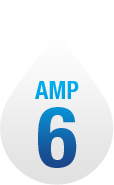West Ham T3 drop shaft
Client: HALCROWScale: 1/7.321
The purpose of the model test was to establish the operating characteristics of the proposed T3 drop shaft arrangement and to optimise the hydraulic efficiency of the model with respect to a typical drop pipe and discharge arrangement.
Flow was to remain stable, without any evidence of choking and air ingestion should not become sufficient to force bulking within the drop pipes, potentially reducing their capacity. The shaft was also had to be capable of delivering flow in as controlled manner as far as possible, ensuring that energy is dissipated from the flow wherever possible.
Initial testing of the proposed arrangement demonstrated that both of the drop pipes, designated MT2 and MT3, passed the maximum flows without significant choking or bulking of the cascading flow.
Free discharge was observed from both the MT2 (1200 mm) and MT3 (900 mm and 1200 mm) connections into the box arrangements at the top of each drop pipe, illustrating that the initial proposed arrangements caused no significant backwater effect to either connection at maximum flow. However, it should be noted that MT3 (when 900 mm) was observed to be almost running at pipe full conditions which could artificially raise the head within the upstream system.
The drop pipes were both observed to be hydraulically inefficient, resulting in significant levels of turbulence at the bottom of the drop pipes. This turbulence could result in erosion at the invert of the shaft, significant air entrainment within the pass forward flows and excessive noise.
Development encompassed three phases.
- Phase 1 – The development of rotational flows within the drop boxes (disregarded following observations made during testing and discussions with the client)..
- Phase 2 - The development to existing horseshoe benching (observed to confine flows unnecessarily, leading to a reduction in energy dissipation).
- Phase 3 – The development of open splash pools (found to promote energy dissipation)
Following discussions with the client it was concluded that the development of open splash pools would be the preferred as low level arrangements. Testing had shown that the development of open splash pools (Phase 3) presents the greatest levels of energy dissipation.
Optimisation of the splash pools was considered and included rounded tops, this however, was observed to have no discernable hydraulic benefit to the flow from either of the drop pipes (across the full range of flows).
















